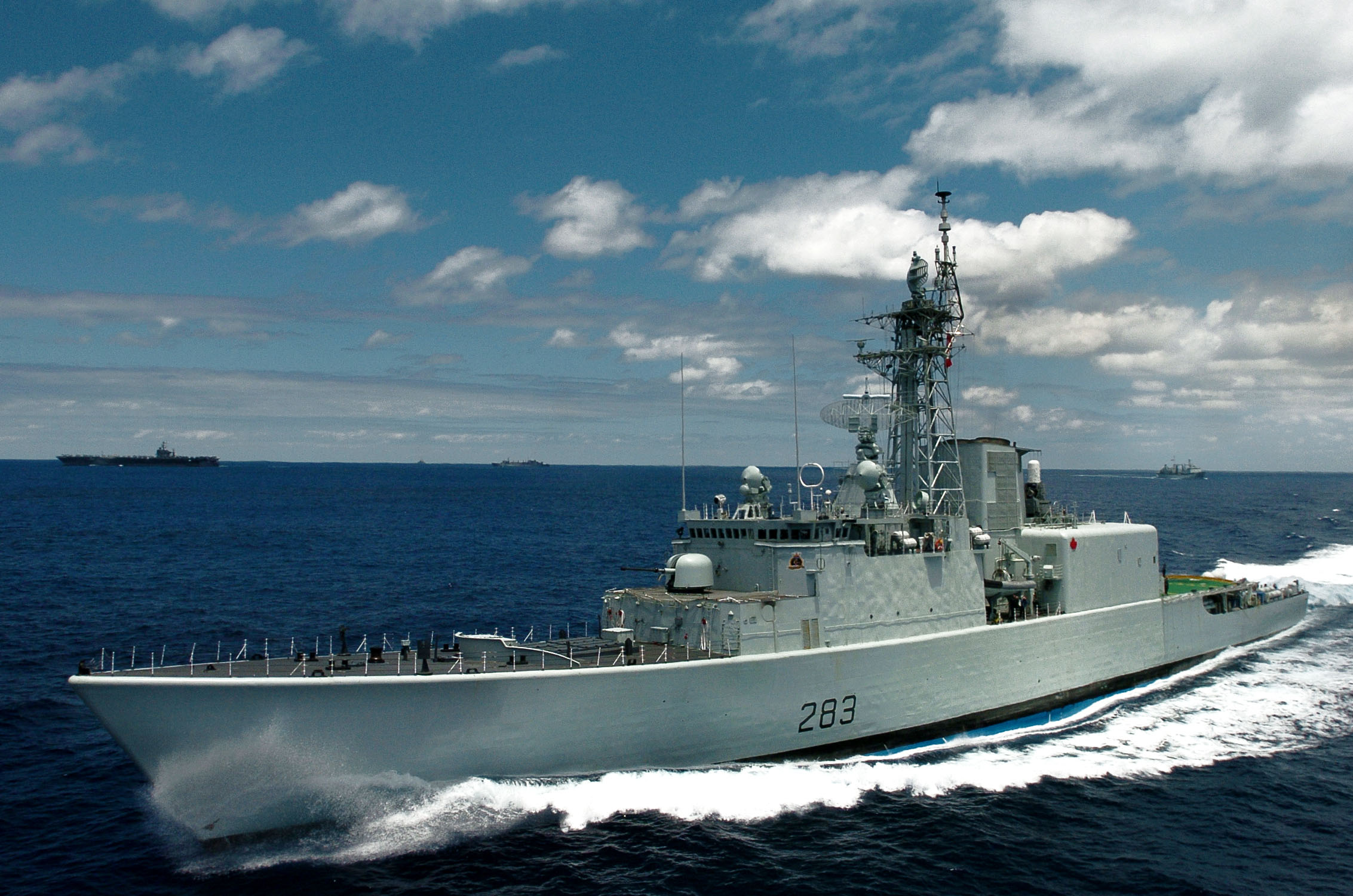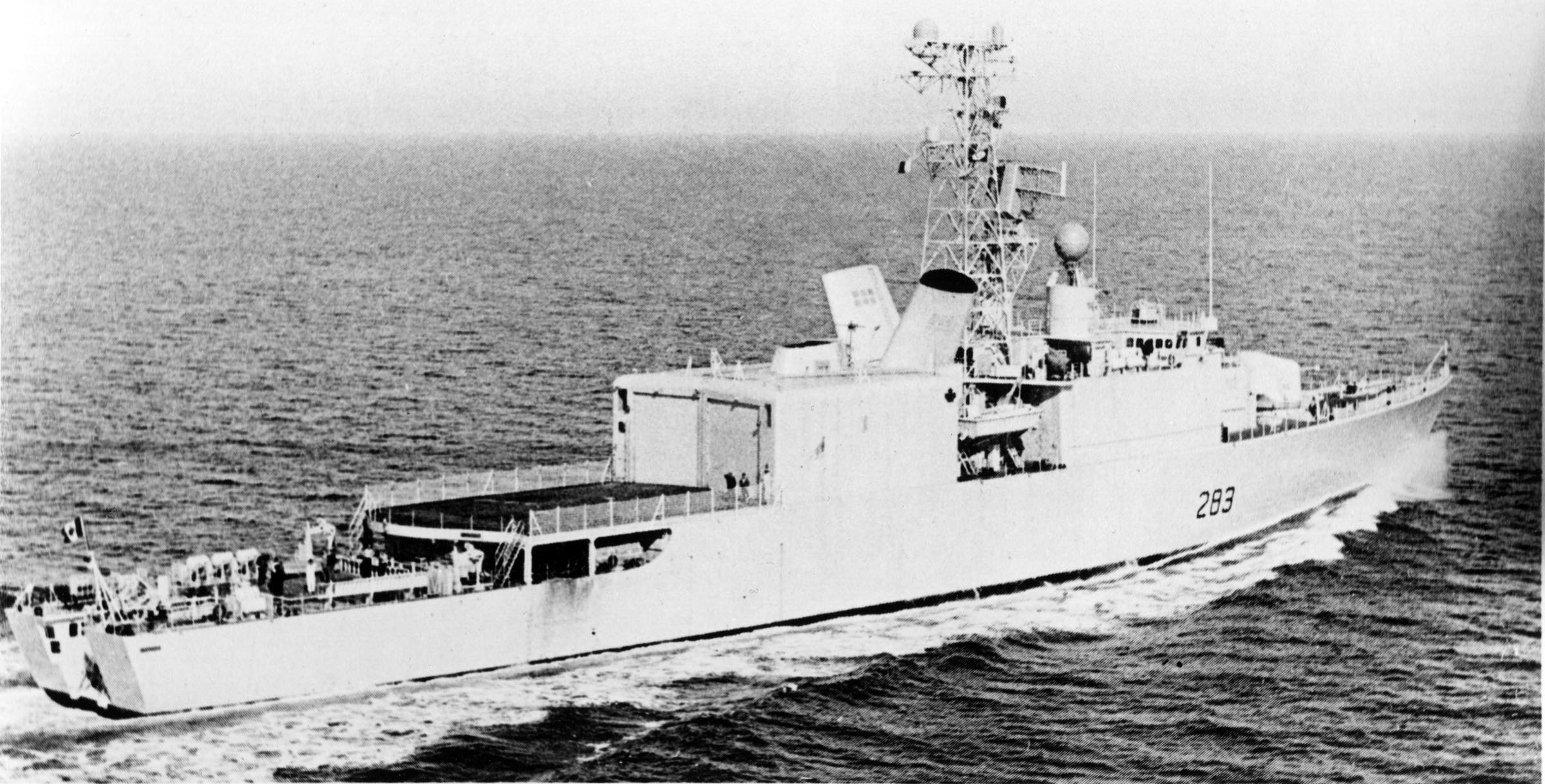HMCS ALGONQUIN (2nd) (283)

HMCS ALGONQUIN (2nd)
The History of HMCS ALGONQUIN (2nd)

The last of the Iroquois Class destroyers, HMCS Algonquin was commissioned on November 3, 1973.
In 1974, she rescued the crew of the fishing vessel Paul & Maria, sinking east of Halifax, Nova Scotia. In 1977, she was the first of her class to cross the equator. After 10 years in service, she had steamed more than 200,000 nautical miles, spent an actual 3 years at sea, had taken part in more than 20 multinational exercises and completed 4 tours of duty with the Standing Naval Force Atlantic (SNFL).
On June 24, 1993, now stationed on Canada's west coast, she transited the Suez Canal to join North Atlantic Treaty Organization (NATO) vessels in the Adriatic enforcing the blockade of the former Yugoslavia. In 1995, she took part in a United States battle group training exercise off southern California. In March 1996, she left Esquimalt, British Columbia, to participate in Exercise Westploy '96 and visited Japan, the Soviet Union and South Korea. More exercises with Pacific rim countries followed during 2000 and 2001.
On March 23, 2002, she was deployed on Operation APOLLO (Canada's contribution to the campaign against terrorism) in the Gulf of Oman.
In 2003, she underwent a refit period and up to the end of her career had been nearly continually at sea, participating in large multinational exercises and conducting Maritime Security Patrols in the Canadian coastal waters of British Columbia.
After 42 years of service, HMCS Algonquin was paid off in 2015.
HMCS ALGONQUIN (2nd) Statistical Data
- Pendant: 283
- Type: Destroyer
- Class: Iroquois/Tribal Update
- Displacement: 3,551 tonnes
- Length: 398 ft
- Width: 50 ft
- Draught: 14 ft
- Speed: 30 kts
- Compliment: 14 Officers and 230 Crew
- Arms: 2-3" (1 X II), 1 Limbo ASW Mortar, Sea Sparrow SAM, 2 Sea King Helos. Modified after TRUMP Update: 1 Martin Marietta Mk 41 Vertical Launch System containing 29 General Dynamics surface to air Standard SM-2MR missiles, 1 OTO Melara 76mm 3in/Super Rapid Gun, Phalanx and 6-324mm MK 32 2 triple torpedo tubes.
- Builder: Davie Shipbuilding, Lauzon Quebec
- Keel Laid: 01-Sep-69
- Date Launched: 23-Apr-71
- Date Commissioned: 03-Nov-73
- Paid off: 11-Jun-15
Remarks
After TRUMP Refit: Displacement 5100 Tonnes (Fully Loaded), Length: 127.8 m, Beam: 15.0 m, Draught: 4.7 m, Speed 29 kts, Complement - 280 men and officers.
Additional Information
Sold for scrapping 27 November 2015 to be completed in Liverpool, Nova Scotia
More Images

Pre-TRUMP refit HMCS ALGONQUIN
